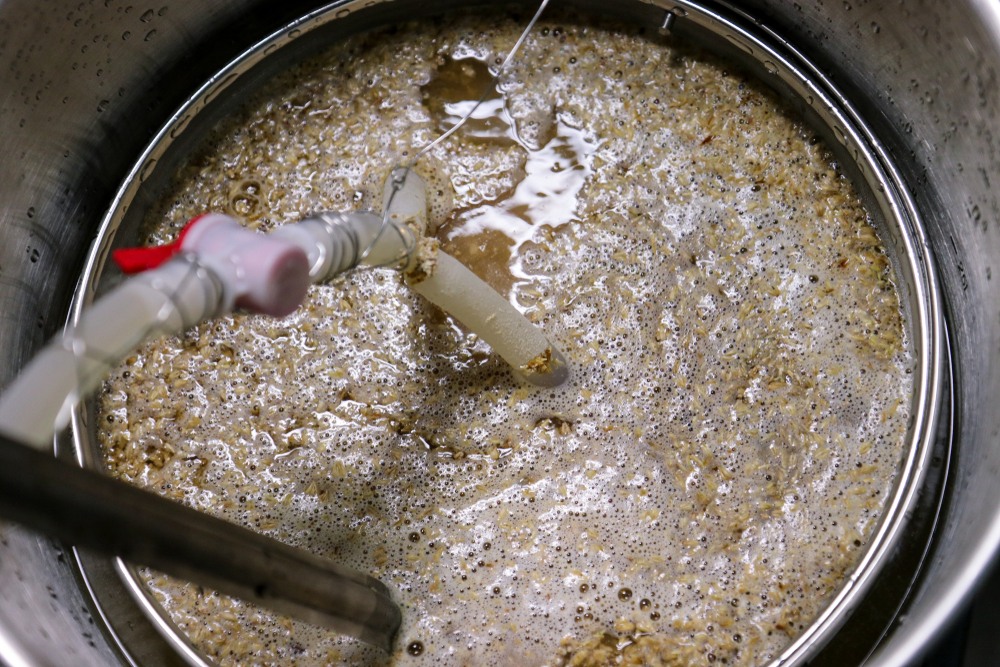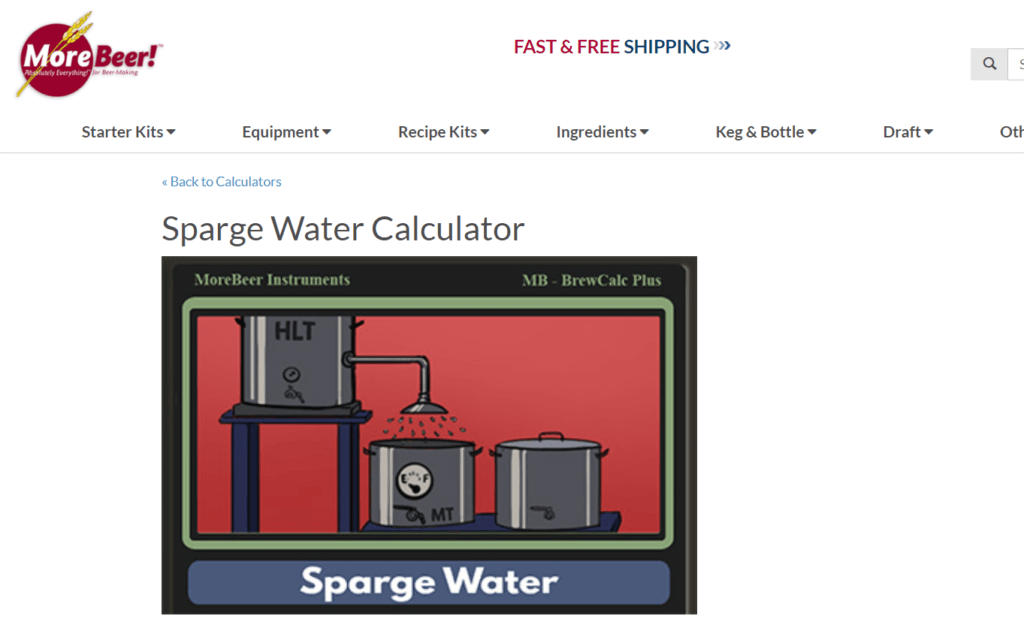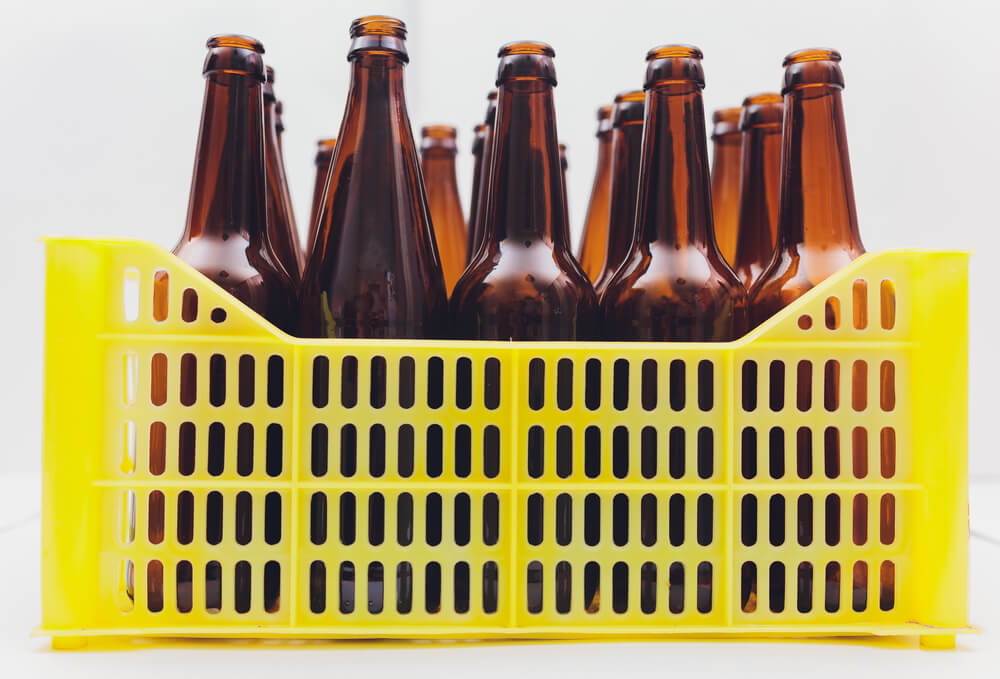Here, our home brewer explains how much water is used in batch sparging.
For many homebrewers, the path to all-grain brewing means learning new skills. One of these new skills is sparging. Sparging is an essential step in the brewing process. It ensures that all sugars extracted during the mash are passed into the boil. Knowing how much water to use in the sparge is also vital in creating a final product that tastes good and is enjoyable to drink.
But how do you know how much water to use in your sparge? Too much water and you’ll end up with too much wort. Use too little water, and you won’t get enough of the sugars in your wort for fermentation. Fortunately, you can quickly figure out how much water is used in batch sparging with a little basic math.
Table of Contents
What is Sparging?

Sparging is a process that uses warm water to “wash” sugars from the grains after the mash has been completed. This step isn’t necessary if you’re using a beer ingredient kit for making your beer. However, sparging is an essential step for those of us who are moving on to all-grain brewing,
There are two ways to sparge: batch and fly.
- Batch sparging is a pretty simple way to sparge, as it requires minimal extra equipment and can easily be done by beginners to all-grain brewing. It simply requires you to pour “batches” of warm water over your mash and allow it to flow through the grains into your boil kettle. The only “extra” equipment you need for batch sparging is a good-sized stockpot.
- Fly sparging is a bit more complicated. Fly sparging allows you to sprinkle water over your mash so that the water coming into your mash tun is the same as the amount leaving your mash tun. For fly-sparging you’ll need a fly-sparge. This tool sits on top of your mash tun and is connected to another kettle containing your sparge water. Using a bit of tubing, you deliver water to the mash tun at a consistent pace while mixing your mash. Fly sparging takes a lot more time to complete and takes a bit of time to figure out when it comes to technique.
To be honest, fly sparging is the best option if you can. But most of us just starting with all-grain brewing don’t want to go out and buy extra equipment until we know we’re ready. Batch sparging allows you to work out the kinks in your early all-grain brewing batches without additional equipment or expense.
How to Calculate Your Sparge Water Volume
The real goal of sparging is to increase your mash efficiency, or how much of the sugars released in the mash actually make it to your wort. So, when you’re thinking about how much water to use in your batch sparge, you need to think about mash efficiency.
Math is a pretty important part of all-grain brewing. And the place where you’ll use the most math when brewing is calculating the amount of sparge water that you’ll need for the beer you’re brewing. Don’t worry, it’s not difficult math, but you may want to take some time to work through the calculations before you’re in the middle of your mash.
The first thing you need to know, when calculating how much water to use in your batch sparge is your anticipated wort volume. This can be calculated using this equation:
Wort Volume = (Pounds of Grain x 0.125) – initial mash water
Keeping in mind that the grains in your mash will absorb some of the water used in the mash, your wort volume will be lower than the amount of water you started within your mash. The average amount of water absorbed by grains in the mash is approximately 0.125 gal/pound of grain.
So … if you use 10 pounds of grain and 4 gallons of water, your wort volume can be estimated as such:
Wort Volume = (10 pounds x 0.125) – 4 gallons
Wort Volume = 2.75 gallons
Now that you have your anticipated wort volume, you’ll need to know the ideal pre-boil volume is for the beer style you’re making. For example, for a 5-gallon batch of beer, you’ll need to have a pre-boil volume of at least a gallon or two more than your end result.
Starting on the high end of this number allows you to use less water after the boil to bring up the volume in the fermenter. So, for this example, we’ll say that our pre-boil volume for 5 gallons into the fermenter is 7 gallons of total boil volume.
Using this number and the estimated wort volume that we calculated, we can now use this equation to calculate the amount of sparge water necessary:
Pre-Boil Volume = Wort Volume + Batch Sparge Water
7 gallons = 2.75 gallons + Batch Sparge Water
Batch Sparge Water = 4.25 gallons
For best results and the highest mash efficiency, we would recommend splitting your batch sparge into at least two batches. This will allow you to rinse as much of the grain sugars into your wort as possible. In the example we used above, each of your batches would use approximately 2.1 gallons of water.
But I Don’t Like Math!

For the homebrewer that really likes math, as you grow in your experience, the calculation used for determining how much water to use in each step of your process gets more complicated and involves many more steps. Fortunately, for those of us that don’t love math, there are a number of online calculators that you can use to determine exactly how much water you’ll need for your brew.
Our favorite is from one of our favorite online home brew stores, MoreBeer!. Their calculator is easy to use, and it includes all of the information that more experienced brewers want to consider in their brewing water volume.
Calculating the amount of water you use in your sparge can make a big difference in how your all-grain brewing turns out. If you’re just getting started, some basic math skills are all you need to start batch sparging with minimal work. As you grow, refining your math or using an online calculator can help you fine-tune your brewing process for the best possible beer.



